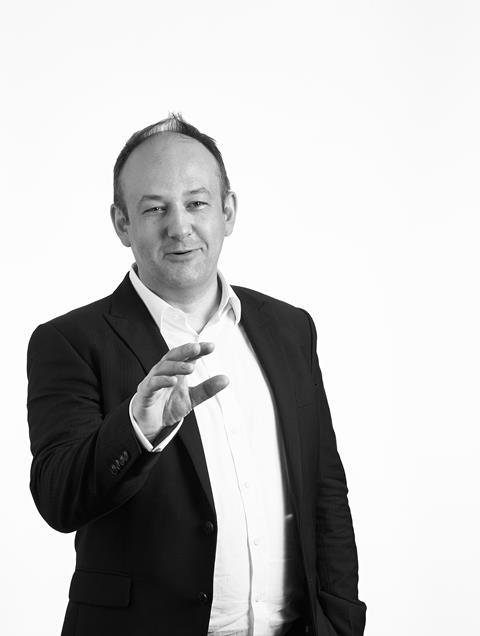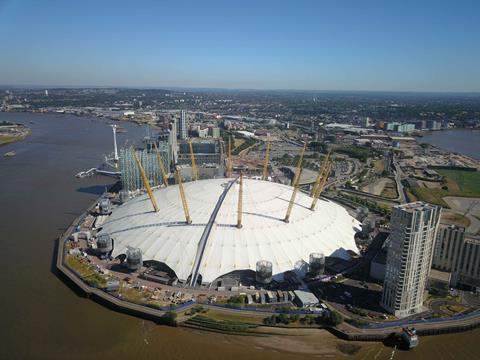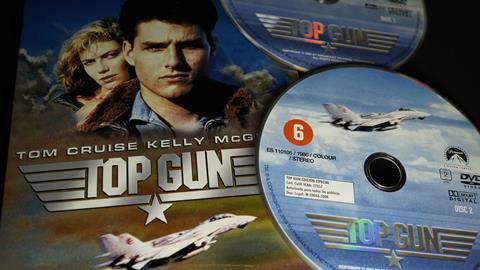The director of cost management explains the importance of challenging clients, the problems with construction procurement and why he did not join the SAS
Why did you choose construction as a career?

An appointment with a careerãs advisor. I was asked to work through a bank of questions which presented a list of only three options, those being a footwear designer, quantity surveyor or the SAS.
Once the careers advisor had established the role of the quantity surveyor, I decided that was the most appealing of the options and the advisor put me in touch with the Chartered Surveyors Training Trust. In hindsight, I think my wife might have preferred me to have pursued a career in footwear design.
I recently watched Abstract: The Art of Design, with Tinker Hatfield which also got me thinking on what could have been, but equally I could not help but think that both the SAS and I had a lucky escape when watching SAS: Who Dares Wins!
What are you most proud of in your career to date?
Learning to work with challenging clients. It is the demands of those clients that have pushed us to redefine the role and develop innovative and progressive propositions which now help our clients to beat the market.
In working to beat the market, we have developed a number of approaches which include cost-led design, an approach we initially expected designers to resist, but which has been surprisingly welcome on the basis that the approach negates the need for product destroying value engineering.
What has been the biggest challenge of your career to date?
My biggest challenge is right here and now ã spreading word of how we can help clients to beat the market by up to 15%. This is against the backdrop of forecasters and speculators accepting and advising their clients to brace themselves for double-digit inflation in 2022, so in real terms by as much as up to 30%!
Sceptics may think this is a marketing play, but to them I say, ãput us to work on a gain-share arrangementã.
If you could change one thing about the industry, what would it be?
I would change how construction work is procured. Design and Build is a busted flush ã fine in its purest sense but abused by the industry and in that sense not fit for the future of construction.
We are client advocates and, if we accept that only 65p in every ôÈ1 spent in construction is realised in the finished product, I think construction management, or a form of integrated procurement, is the best way to optimise the product ã and get at the transactional costs of construction, reducing preliminaries, overheads, fees and eliminating risks.
What is the most helpful advice that you have been given?
At the end of each day ask yourself what contribution you have made to a meeting, a project, your practice, your profession and/or society.

Name your favourite building in the world?
I am interested in the integrity of a buildingãs construction. Engineering is not something that you just use to hold things up or to service a space. It is something that can contribute to the architecture, so I am an enthusiastic fan of inside-out buildings or high-tech architecture.
Favourites include the Leadenhall ¤ûè¨üàèºTV (Cheesegrater), the Millennium Dome, the Pompidou Centre and the Lloydãs ¤ûè¨üàèºTV
I am mindful that all those buildings were in fact designed by the office of Richard Rogers. Perhaps it is the pop of colour, structure and movement, with the help of enlightened clients and some brilliant and imaginative engineers putting concept before calculation.
Which famous building do you most dislike?
If one building stands out, it is the Scottish Parliament building at Holyrood - but not for the architecture. It is because the industry uses the Scottish Parliament building as a sensationalist argument as to why clients should not consider a construction management procurement strategy ã and most of those critics have never read the report into its construction by Lord Fraser of Carmyllie QC, which cited a whole host of other challenges.

Which famous building do you wish you had worked on?
I think one of the early Anglo-American construction management collaboration projects in London ã Broadgate, London Bridge City, Victoria Plaza, Chelsea Harbour or Canary Wharf ã where US firms were appointed as construction advisers or in joint venture arrangements to bring an infusion of US construction knowledge and ãcan doã American attitude
These complicated and fast-track building projects required the assimilation of best practice from around the world. Bovis had assembled incredibly talented teams in the late 1980s which then travelled the world to learn how to achieve seemingly impossible timelines and budgets - achieved through the rationalisation of construction techniques and buildability advice.
Who do you most admire in the construction industry?
There are so many people who have inspired my efforts to date but, given my advocacy and interest, the trailblazers in construction managemen:, Carl Morse, Harold Schiff, Richard Halpern, Peter Lehrer, Gene McGovern and Ian Macpherson
More recently, I consider Ray OãRourke to be a visionary and applaud the exceptional team at Bryden Wood.
What do you think your best quality is?
A growth mindset. Curiosity. I have a thirst for knowledge, which can be blessing, but exhausting at times!
What trait do you most dislike in yourself? And in other people?
Cost and commercial managers are trained to be critical. In response, I would like to be more optimistic. I recently read the Happiness Advantage, so a work in progress. I am also impatient and have ambitious standards, so am rarely satisfied
In others, fixed mindsets and egos! As Baz Luhrmann said, ãwhatever you do, donãt congratulate yourself too much or berate yourself either. Your choices are half chance, so are everybody elseãs!ã
Name three things that you like
Spending time with my family; reading; watching 1980s movies (think Ghostbusters, Rain Man, The Terminator, Top Gun, Wall Street).

Tell us about a secret skill that we donãt know you have
I am fascinated by the science of forecasting and prediction, correctly calling both Brexit in 2016 and Trump in 2017.
What is your most prized possession?
I have a collection of pictures on my desk that my children have drawn for me at nursery and school which are just brilliant.
Early bird or night owl?
I have young children so, like it or not, I am now an early bird and have learnt to love watching London wake up.
What is your favourite food?
You cannot beat a traditional Sunday roast.
What would your superpower be?
It would be the power to reverse climate change. On this front I donãt know if we must be superheroes, but instead focus on what matters and what we can control, with for example our shopping habits. Start by making small positive changes to reduce our carbon footprint in the hope of creating a compound effect.
I witnessed such behaviours when eating at Brewdog recently with a group of industry friends, where highlighting the carbon footprint on a menu made the difference between ordering the Patriot Burger or Buffalo Chicken Wings!
K2 is a project and cost management consultancy




























No comments yet